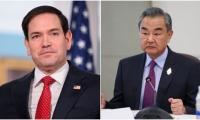The chief culprit behind the increase in electricity rates is the host of legacy power purchase agreements that successive governments signed with foreign and domestic investors to set up independent power projects in Pakistan.
All these IPP deals are on ‘take or pay’ basis, providing almost guaranteed and very healthy returns under sovereign cover, with dollar indexation, and several other financial and contractual incentives.
It is easy, with 20/20 hindsight, to question the wisdom of policymakers to bind the country into long-term commitments on such unsustainable terms and conditions. It is, however, also true that no electricity is worse than expensive electricity, and that we should be thankful for at least having the generation infrastructure in place even if it is more than our actual needs today.
Notwithstanding the strong correlation between economic growth and electricity consumption, Pakistan’s economy can simply ill afford to pay Rs40-50 for each unit of electricity produced by the imported coal and LNG-based power plants. A primary driver of the Rs2,500bn circular debt choking the power sector is the fixed capacity charges that have now reached almost Rs2,000bn per year. With more than 20,000 MWs of additional ‘committed’ projects in the pipeline at various stages of construction and development, this continually rising must-pay cost cannot simply be ‘passed through’ to consumers in the name of economic orthodoxy.
In fact, increasing rates depress overall electricity demand resulting in a higher per unit tariff for all. Customers are also forced to conserve (not necessarily a bad thing on its own), and incentivized to steal, default or switch to captive sources of supply, while the system’s fixed charges keep rising. Peel the onion and you will find this happening at all levels, making the entire sector unviable.
As a general principle, reopening signed and sealed contracts -- voluntarily or otherwise -- is a double-edged sword that damages long-term investor confidence or exposes the country to international arbitration. The sanctity of contracts should be maintained even though our economy continues to pay a heavy price to arguably make those deals ‘bankable’ at the outset. Nonetheless, we need to reprofile the front-loaded debt of the newer IPPs to provide some breathing space to the ratepayers in the next 3-5 years.
Debt restructuring is a controversial topic in Pakistan, although it is common all over the world for financially distressed borrowers and their lenders to find new common ground when needed. Yes, we will end up paying a bit more in absolute terms by stretching the loan tenor but need to provide some tariff relief to consumers in the short-to-medium term but only if this is done as part of a holistic reform plan for the sector.
The massive devaluation of the rupee against the US dollar, alongside the major recent jump in international fuel prices, has also significantly contributed to the overall increase in consumer tariffs in Pakistan. The exchange rate is related to a country’s macroeconomic fundamentals and not much can be done by the power-sector practitioners to avoid its adverse impact. However, the freezing of the USD/PKR rate under the older IPP contracts must have arrested some of the recent tariff increases but probably not enough to move the needle appreciably.
On the fuel side, we should do whatever it takes to convert all existing imported coal power plants to cheaper indigenous Thar lignite as expeditiously, technically, and logistically as possible via the railway network. Several feasibility studies and analysis have already been done on this public private partnership model to reduce consumer tariff and save foreign exchange.
A technical reason behind monthly tariff increases is the so-called violation of merit order dispatch policy which basically means that the least cost generation principle is not always followed. There are often constraints such as transmission bottlenecks not yet fixed, or contractual imperatives (must-run coal plants, for instance), but mostly it is due to suboptimal fuel mix and availability caused by late ordering and/or lack of funds. Although governments and power companies are loath to admit it publicly, circular debt chokes liquidity and flow of capital in the system resulting in unavailability of (imported) fuel especially during the summer season.
And this is also why consumers still experience unplanned loadshedding from time to time, even when Pakistan’s current installed generation capacity exceeds peak demand. Simply put, if we don’t have enough money to buy petrol, it does not matter how many cars are idly parked in our garage that we are nonetheless paying for in fixed costs.
The cost of renewable energy has come down appreciably over the past decade, thanks to technological improvements and the Chinese ‘economies of scale’ manufacturing miracle. In most instances, their total cost of generation is now less than even the ‘marginal’ fuel cost of imported coal, LNG and oil-fired power plants operating in Pakistan. It, therefore, makes economic sense to replace these hydrocarbon-based assets with newer wind and solar power to reduce overall consumer tariff.
However, without addressing the legacy fixed costs of older generation plants, such ribbon-cutting optics are not the structural solutions and hard choices the sector requires. We need to consider these ‘stranded’ costs part of the national debt and a budgetary line item spread over the entire economy. While not a solution per se, this accounting treatment would relieve power-sector consumers from bearing the entire financial load of prior policy actions and inactions.
To be continued...
The writer is a former SAPM on Power & Petroleum







